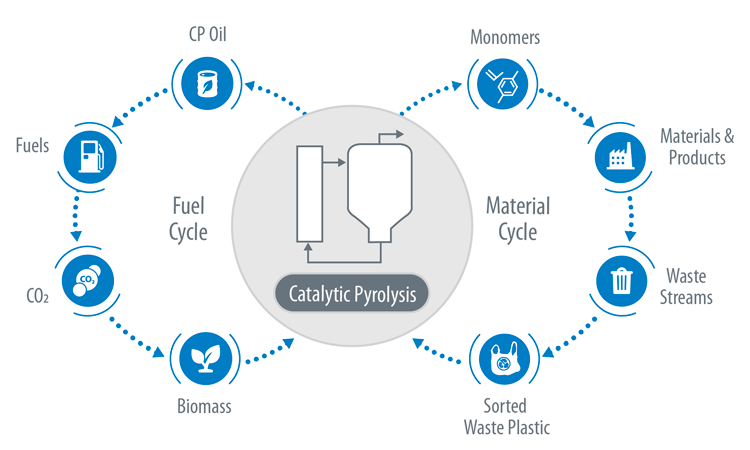Catalytic Pyrolysis and Research Needed To Accelerate Its Commercialization
ChemCatBio 2023 Technology Brief
This work charts a path toward the commercial-scale application of catalytic pyrolysis by identifying key short- and long-term technological barriers.
Catalytic pyrolysis to convert biomass and waste plastic into bio-based fuels and chemicals has attracted significant academic and commercial attention. However, technological barriers must be addressed before it can become fully commercialized. As these barriers are overcome, the catalytic pyrolysis technology platform will transition from small-scale units to integrated commercial processes within refineries and chemical facilities. Here, we map out remaining challenges for each stage of the catalytic pyrolysis technology’s development.
Roadmap of Catalytic Pyrolysis From Current State to Commercial-Scale Applications
Related ChemCatBio Capabilities
Supporting Resources and Publications

Catalytic Pyrolysis as a Platform Technology for Supporting the Circular Carbon Economy
Nature Catalysis, 2023
Josh Schaidle
[email protected]
Key Findings
Catalytic Pyrolysis Has Attracted Significant Attention
Since 1988, biomass and plastic catalytic pyrolysis have appeared in over 20,000 journal articles and patents, with the annual publication rate steadily increasing. These trends underscore how seriously researchers and industries are considering catalytic pyrolysis as a commercial technology for producing bio-based fuels and chemicals.
Development of Catalytic Pyrolysis Units Has Accelerated in Recent Years
In recent years, a variety of companies have constructed pilot-, demonstration-, and commercial-scale catalytic pyrolysis facilities. As the technology has matured, larger units have been built, and facilities have expanded their choice of feedstocks to include waste plastics.
The Magnitude of Catalytic Pyrolysis Production Can Be Relevant to the Demand for Fuels and Chemicals by 2040
The output of existing technologies is projected to fall well short of the global fuel and plastic demand in 2040. While adopting the catalytic technology platform will be constrained by a variety of factors, it still has the potential to make a significant contribution to filling the demand for fuels and plastics.